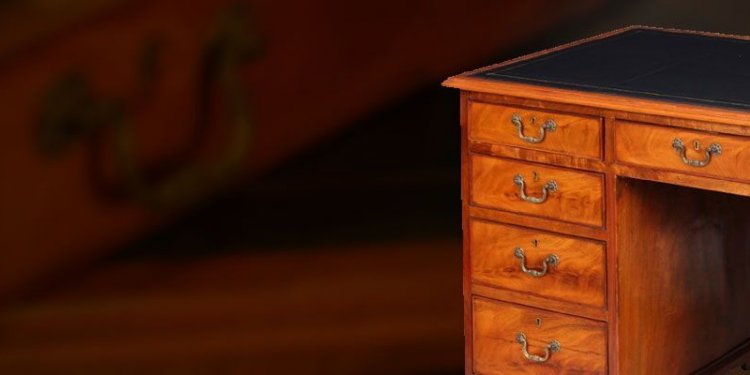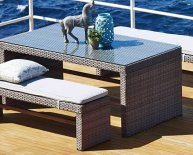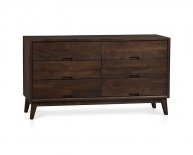
Small Antique Desks
 Advice on Choosing and Buying an Antique Desk
Advice on Choosing and Buying an Antique Desk
Here are a few points to consider:
Originality and Authenticity:When considering whether an antique piece of furniture is authentic and in its original condition it is worth standing back and looking at the overall impression. Does the veneer or timber of the top match that of the base? Does the piece look in proportion?
If we consider smaller antique desks and writing tables we see a large number have been converted from other items of furniture such as dressing tables or washstands. One possible indicator that a desk has been converted from a dressing table is the fixed construction of the piece. Even small desk would often have been constructed with separate pedestals for ease of installation, whereas the dressing table would normally be made as one piece and not have a separate top and would not have a polished back.
Also look for signs of use inside the drawers, ink stains and wear marks. A genuine old desk or table should show signs of wear somewhere on the body. Most antique pieces of furniture will have bumps and knocks especially if they have been used in a place of work such, as an office, and these should be visible even if it has been recently restored. These are part of the character of the desk showing it has been well used over many years. Our antique desks and writing tables have been in constant use for over a century. If an antique desk or table looks brand new it is probably a reproduction.
Mahogany Timbers:
Furniture made from good quality Mahogany will always command a high price. Mahogany has always been a popular choice for furniture because of its strength. It has tremendous density because of the lack of knots and holes in the grain of the wood.
Mahogany also has the properties that will keep it from succumbing to wood worm or areas that are prone to wet weather or humidity. Many antique desks and tables that have survived the centuries are made from mahogany and these can last for hundreds of years if they are taken care of.
 Earlier in the 19th century quality timber was more readily available and veneers were cut more thickly so tended to have more attractive figuring and the drawer linings would be made in oak, mahogany and cedar.
Earlier in the 19th century quality timber was more readily available and veneers were cut more thickly so tended to have more attractive figuring and the drawer linings would be made in oak, mahogany and cedar.
N.B. Most old desks have been restored at least once during their life, particularly those from the early 19th century and Victorian periods. This is not going to detract from the authenticity of the piece as long as it has been restored sympathetically and undertaken in a traditional manner finishing with a French polished or waxed finish.
What effects the value of an antique desk?When buying an antique desk, age, originality, quality and size are the factors that determine price.
Most old desks have been restored at least once, particularly those from the early 19th century and Victorian periods. Look for sympathetic restoration undertaken in a traditional manner with a French polished or waxed finish.
Desks with original leather writing surface are hard to come by and is highly prized. We aim during restoration to retain where possible as much as we can from the original, but the main areas of wear, leather writing surface, knobs, handles and plinths are often beyond recovery. We replace missing wooden knobs by making new to the same pattern and from similar timber.
Look at the quality of the veneer, earlier in the 19th century quality timber was more readily available and veneers were cut more thickly and tend to have more attractive figuring.
A good indicator of quality are the drawer linings, those made in oak, mahogany and cedar are generally best.
Most are of dovetailed construction and are hand made. If the desk has the original locks those stamped with the manufacturers name are a good indicator of quality.
A FewConsiderations
There are a few things which you should consider when viewing a desk:
- Has the desk been made from some other piece of furniture? Because of their popularity many smaller desks and writing tables have been adapted from furniture such as dressing tables or washstands. These are often fixed pieces, as in the kneehole desk, rather than two pedestals and top, and are not often not polished at the back. Check whether the veneer, or timber, of the top matches that of the base? If they are diffent then the chances are they have not been made at the same time.
- Look at drawer linings to see whether they are made of mahogany or oak or cedar If they are made of plywood you can be sure this is either a cheap replacement of the item was made in the 20th century.
- A desk that is 100+ years old should have signs of wear comensurate with its age. Surfaces of the desk should show signs of wear, knocks and bumps, these are part of the character of the desk.
We are happy to show you our stock but as we work from home we do ask that you contact us before your visit.
Find us at: Studio House, 143 Chester Road South, Kidderminster, Worcestershire, DY10 1XB - Near Junction 5 of M5 and junction 1 of M42
World Wide Delivery Door to Door:
Please email your delivery address with Post Code or Zip Code and we will send you a quote for delivery within 48 hours.















